Most Kansans have heard the name of John Brown. This iconic legend was a hero to some and a villain to others. Although he was not born in the state, many of his most notable actions occurred there. During our Miami County Road Trip, we stopped at the John Brown Museum to learn more about this Civil War-era abolitionist.
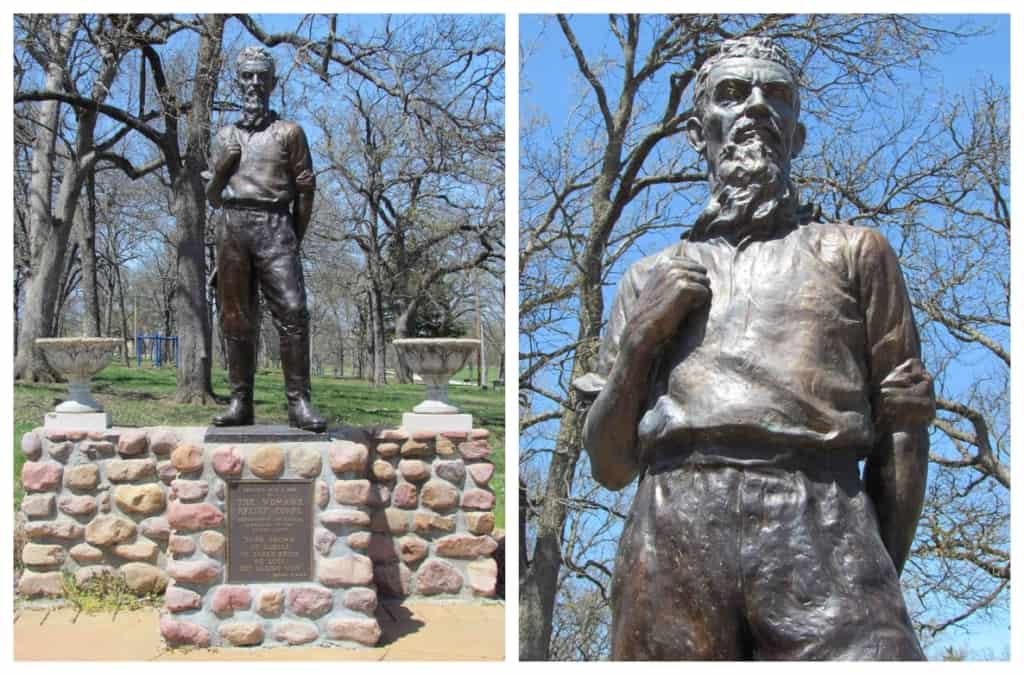
Familiar Face
While the name is somewhat familiar in a regional way, John Brown’s image has had a further reach. John Steuart Curry captured the spirit of Brown in a mural at the capitol building in Topeka, Kansas. An aged Brown, adorned in buckskin and beard, holding a gun in one hand and a bible in the other. Just as an interesting side note, this artwork was also used as the cover for the band Kansas’ self-titled album in 1974. I’m sure there are a few of you who will get that reference. The John Brown Cabin Museum is located in Osawatomie, Kansas. We had just finished lunch at nearby Chris’ Cafe and decided it would be a nice walk to the site.
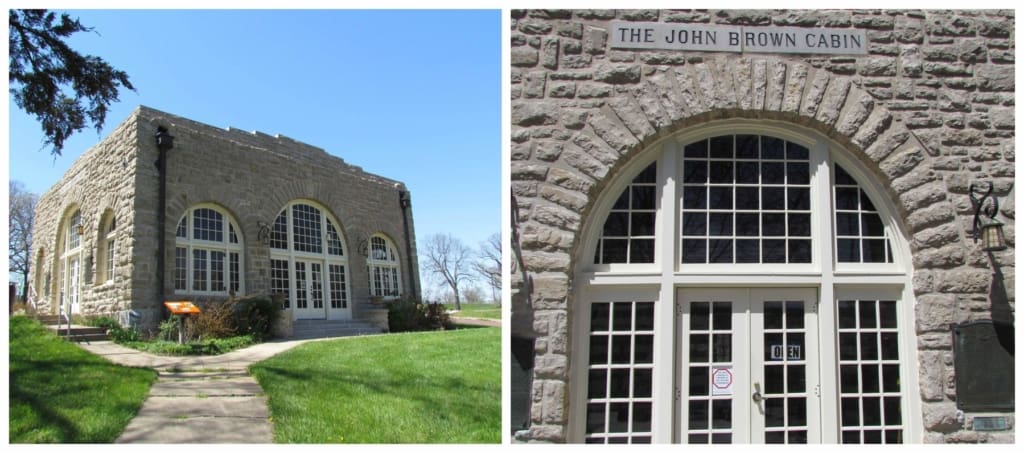
After the short half-mile walk, we entered the John Brown State Park where the museum resides. The bright sunny day had drawn families out to enjoy the picnic shelters located around the base of the museum grounds. The statue of John Brown, which was erected in 1935, signaled our arrival at our destination. A short walk leads from the park to the museum building. From the outside, we were a little confused about why it was called John Brown’s Cabin. Clearly, the limestone building was built long after his lifetime. The answer would soon become apparent.
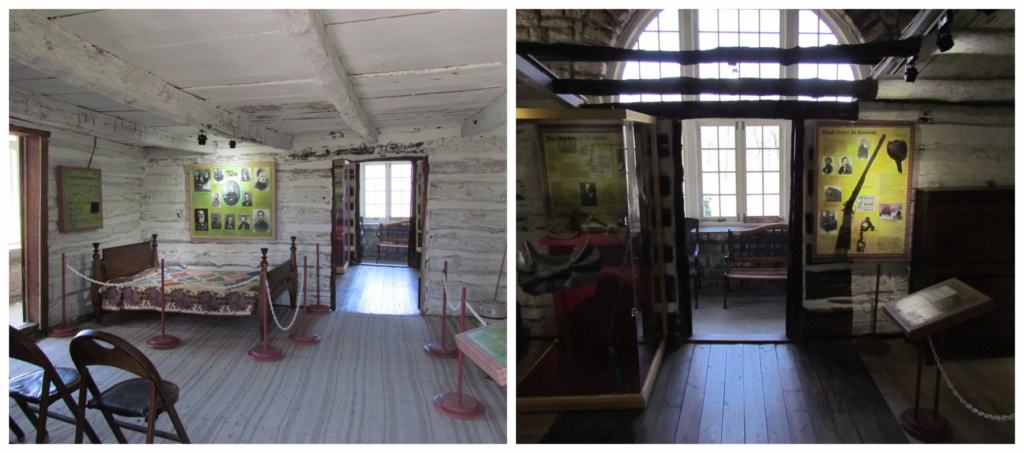
Adair Cabin?
As we entered the museum, we were immediately aware of the presence of the cabin. The outer building is built as a shell over the original site, with enough room to navigate around it from all sides. This was not actually John Brown’s cabin, but the home of his brother-in-law Reverend Samuel Adair. The cabin was not originally on this site but was dismantled and moved here in 1912. The park is the site of the Battle of Osawatomie, which was one of a series of clashes between free-staters and pro-slavery forces in “Bleeding Kansas”. By the late 1920s, deterioration was setting in, so the state appropriated monies to build the pergola which protects the cabin today.
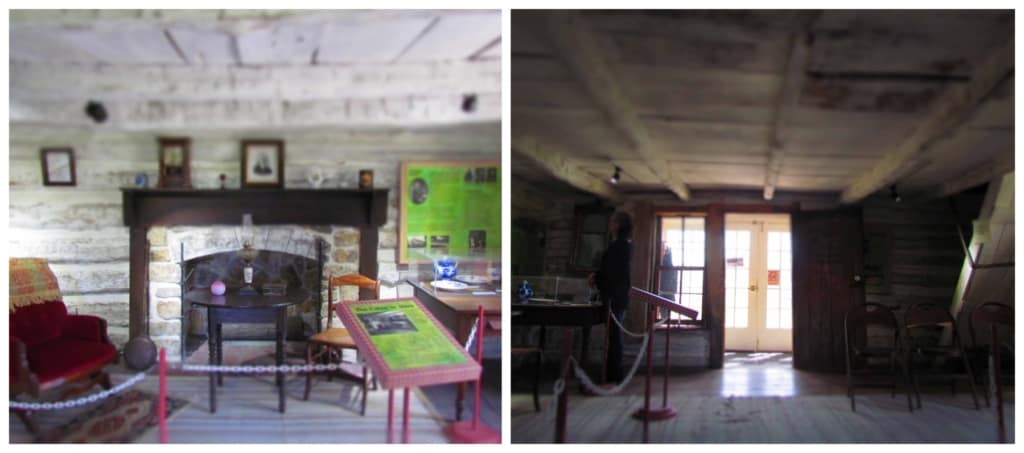
Rising Tensions
The Kansas-Nebraska Act of 1854 left the decision of whether Kansas would enter the Union as a free or slave state to the voters. This was probably the biggest cause behind the eruption and escalation of conflict along the border. With a vote impending, both sides rushed in new residents to pad the polls. In 1855, John Brown’s arrival would be a spark to escalate the violence. In May of 1856, Border Ruffians sacked the town of Lawrence, Kansas. Four days later, John Brown would lead his followers to slaughter five pro-slavery men in the Pottawatomie Massacre. This retaliation would make Brown a threat in the eyes of the pro-slavery forces. Throughout the summer the violence would increase, and be marked as three of the bloodiest month of the Bleeding Kansas period.
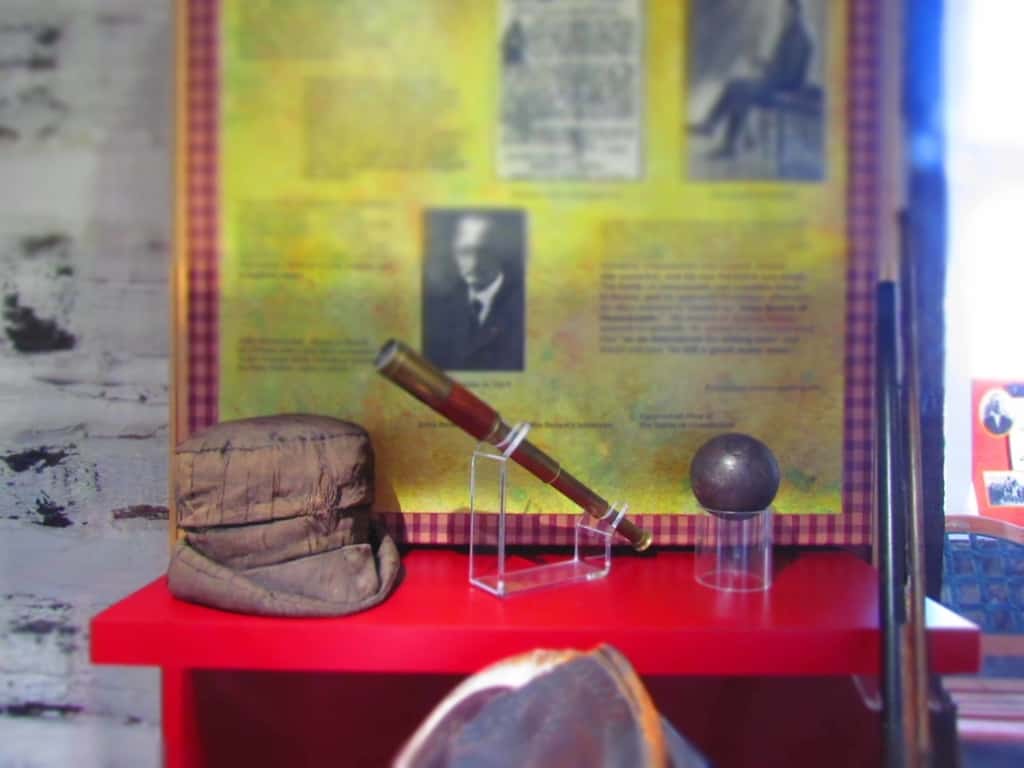
Battling Slavery
John Brown’s basic principle for overthrowing slavery was the use of violence. His dream was to make Kansas the ending point of the Underground Railroad, but he struggled with the passive residents of the territory. He felt that too many of them were all talking and not enough action. The town of Osawatomie had become a target for Border Ruffians due to being the base for John Brown’s activities. After a pro-slavery raid in the early part of the summer of 1856, all except about 200 residents had fled east. In August of that year, several hundred Border Ruffians led by John Reid descended on Osawatomie, Kansas. As they assembled outside of the town, one of the advance guards came in contact with John Brown’s son, Frederick. This resulted in Brown’s son being the first victim of the Battle of Osawatomie.
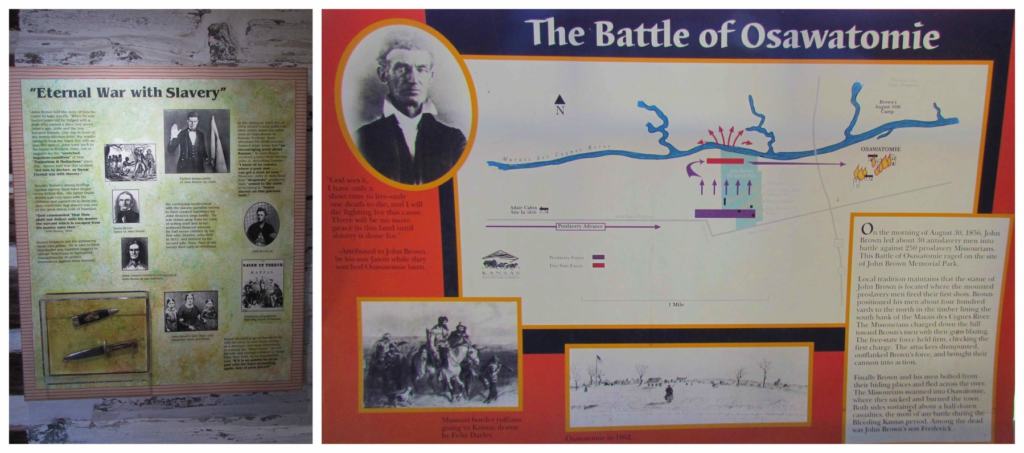
Informational Abundance
Even though the cabin is basically just two rooms, the staff has done a good job at filling it with information. The placards tell not only about John Brown and his activities but also about the Adair family who owned the cabin. The majority of the information concentrates on the period prior to and at the start of the Civil War. There are other informational signs that explain how the Adair family arrived in the area, as well as what happened to John Brown after leaving Kansas. A collection of furnishings from the period are on display. One of which is the melodeon that he gave his daughter Ruth as a wedding present. It is said that it was played at his funeral in December of 1859.
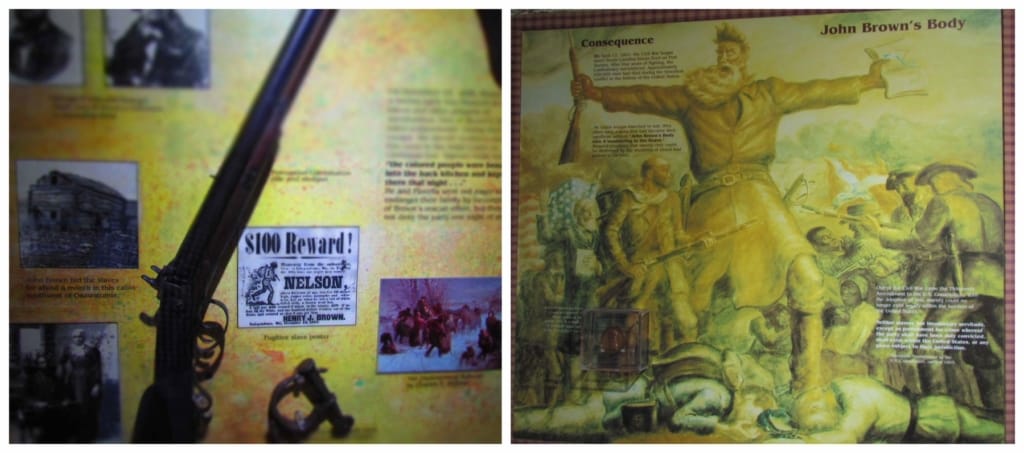
The Turning Point
After leaving Kansas, John Brown traveled east drumming up support for his anti-slavery reform. He found resistance from many abolitionists who felt his approach was too vulgar and violent. He befriended Harriet Tubman, who helped him recruit former slaves into his fighting forces. He arrived at Harper’s Ferry, West Virginia, and awaited his troops. While his plans called for 4500 men, he only assembled 21. His plan was to raid the armory and seize the muskets and rifles to arm the local slaves. With little resistance, they quickly captured the armory. The locals quickly sealed off their only path of escape. Two days later a company of Marines broke through the doors and captured Brown. After a week-long trial, John Brown was found guilty of the five deaths that had occurred during the actions at the armory. He was sentenced to hang, which took place in December of 1859. While this action ended Brown’s life, it also sealed his legacy with the abolitionist movement. Many historians also believe John Brown was the spark that lit the fires of the Civil War. And to think there are some people who don’t think there is anything to see in the middle of the country.


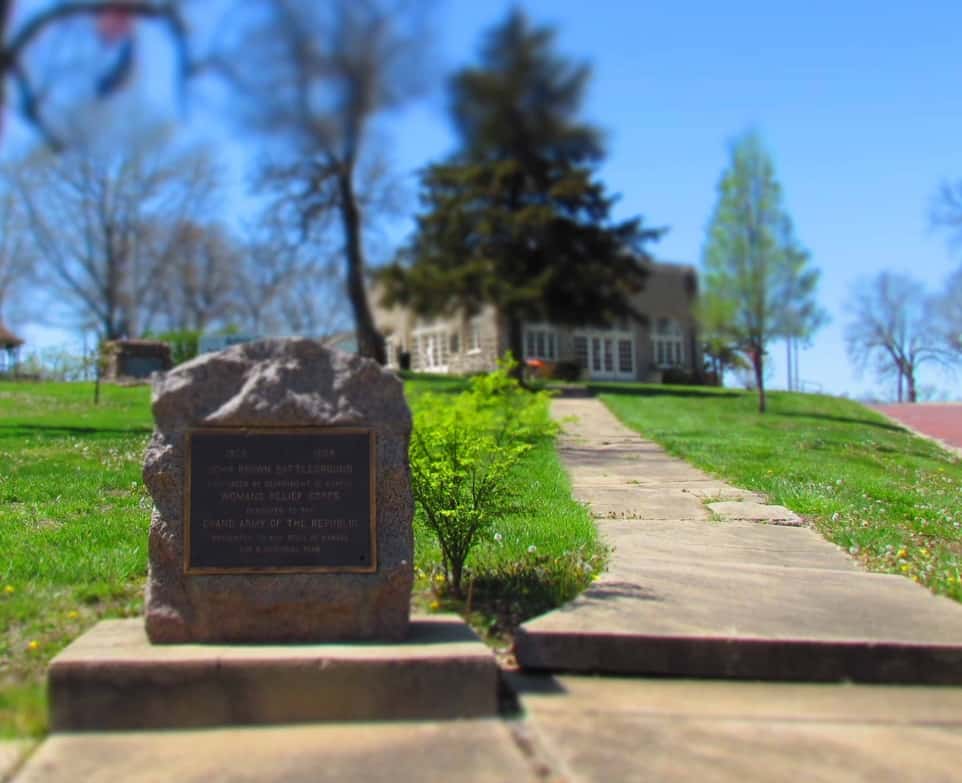


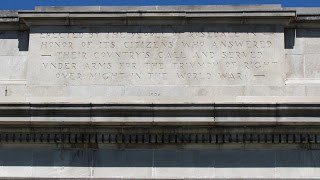
I remember learning about John Brown’s rebellion in high school history. It was a complete failure, of course, when he got so few people to join him. Yet in combination with the abolitionist movement, the underground railroad, and all of the other subtle and not-so-subtle forms or resistance, the Civil War became pretty inevitable.
So true. Of course, his actions were part of the impetus for the South to succeed.
Secede
It didn’t solve the problem at that time.
I was a history major in college, but I learned something here. I didn’t realize (or had forgotten) that John Brown had a roll in the time of Bleeding Kansas. With the current factiousness in the United States, being reminded of the events leading up to the Civil War gives me pause.
Great insight. Thanks for following up after reading the article. We love to hear other views.
His soul is marching on!
He inspired quite a few songs.
I learned about John Brown when I visited Harper’s Ferry, West Virginia. Fascinating man and like you said he was a hero to some because of his ideals and a villain to others because of his violent ways. Thank you for showing me another site where I can visit and learn more about him.
Marilyn, we hope you have a chance to visit some of the sites along the Kansas-Missouri border. So many Civil War skirmishes occurred around here. Travel safely!
Very interesting post about John Brown. I know the name, but as a Canadian, really knew nothing more about him.
Thanks for stopping by and reading up on the subject.
Good job on giving both sides. History is told one side being the correct truth. I consider most of histories villains or heroes. To be infamous instead of famous.
So true. Usually the story that gets told is by the victor alone.
What about his statue at 27th and Roswell Going into the Quindaro Ruins. Used to play down there when I was a kid.
We have made a stop by that one. That is an area of town that s due for a positive transformation.
Brown’s burial location was not mentioned. He is buried in Elba, NY.
Thanks for that info.
When I discovered John Brown was my 4th cousin, 6 times removed, it became important to me to know more about him. The snapshot of information that is generally known is not nearly all there is to say about him. I live in Fort Scott, Kansas, and have visited the cabin in Osawatomie and also Harper’s Ferry. John Brown certainly was doing the right thing using the wrong methods. For people to write him off as merely a zealot shows a lack of knowledge.
It was a different time and the passion that people used to pursue their beliefs was often uncontested. History is a lesson for all to see.
Do you have a family tree for John Brown? There was a family myth that he was related on my father’s side. It would interesting to know if true or not.
No, but you might be able to Google it. That would be an interesting rumor to confirm.
I guess we’re related since John Brown was my great grandfathers cousin. All from Deacon Samuel Chapin in Springfield MA. John Brown went back to Springfield at the Chapin house to meet with Fredrick Douglas while planning the raid on Harper’s Ferry. Fredrick Douglas wrote that John Brown was the first martyr of the Civil War. Many believe that the Carrington Event of 1859 was the sign from God Brown told Douglas he was looking for.